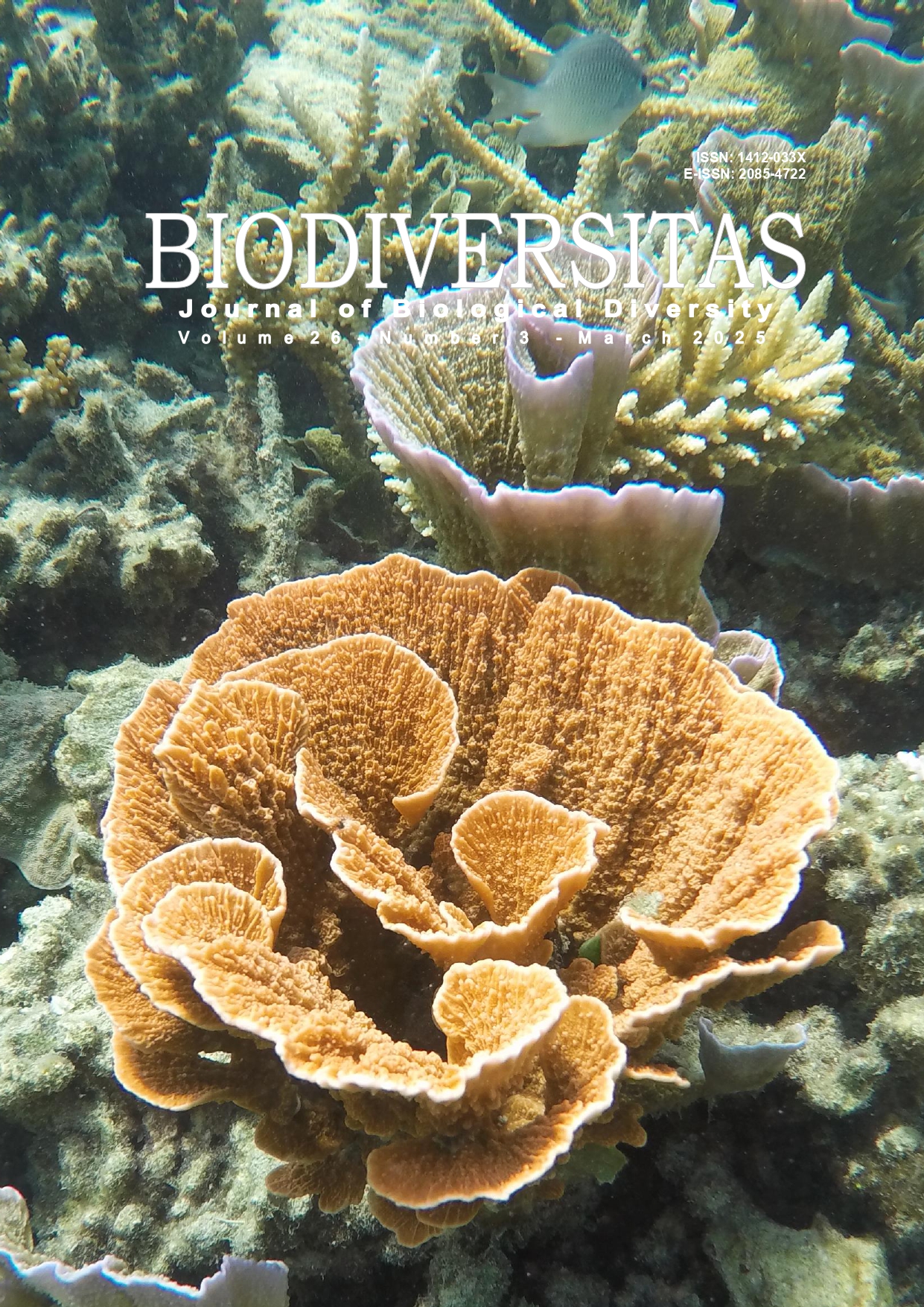Present and future habitat suitability of Mantheyus phuwuanensis under climate change scenario
##plugins.themes.bootstrap3.article.main##
Abstract
Abstract. Chuaynkern C, Khajitmathee N, Phochayavanich R, Phommexay P, Chaiyes A, Maury N, Sudavanh S, Aowphol A, Rujirawan A, Pailoblee S, Suksavate W, Duengkae P, Chuaynkern Y. 2025. Present and future habitat suitability of Mantheyus phuwuanensis under climate change scenario. Biodiversitas 26: 1075-1084. The Phu Wua Rock Agama, Mantheyus phuwuanensis, is a diurnal lizard endemic to northeastern Thailand and western Laos, first described in 1991 from Phu Wua Wildlife Sanctuary (northeastern Thailand). Despite being listed as Near Threatened by the IUCN, little is known about its ecological requirements, population dynamics, and the extent of its distribution. This study aims to provide an updated assessment of the species' range and evaluate its habitat suitability under current and future climate scenarios. Field surveys complemented by literature reviews documented 1,994 occurrences of M. phuwuanensis across its range. Using 28 environmental variables, Species Distribution Modeling (SDM) in MaxEnt achieved exceptional predictive accuracy (AUC: 0.993±0.005). Precipitation during the warmest quarter (average 1,519.58±339.04 mm³; range 825-1,855 mm³), distance to unconsolidated sediments (average 6.09±7.51 km; range 0-16.70 km), and slope (average 7.26±2.64 degrees; range 0.24-11.97o) were identified as the primary environmental factors influencing habitat suitability. Current suitable habitats were estimated at 2,715.90 km², primarily concentrated in Laos. Projections for 2050 and 2070 under SSP2-4.5 and SSP5-8.5 climate scenarios revealed alarming habitat reductions of 65.93-88.87%, highlighting the species’ high sensitivity to climate change. Conservation measures are urgently needed to mitigate these impacts. We recommend designating M. phuwuanensis as a protected animal under Thai law and upgrading its CITES status to Appendix III to combat potential overexploitation. Future conservation strategies should prioritize habitat protection, ecological restoration, and cross-border collaboration between Thailand and Laos. These findings offer crucial insights into the vulnerability of M. phuwuanensis and underscore the importance of integrating habitat management with regional conservation efforts.

